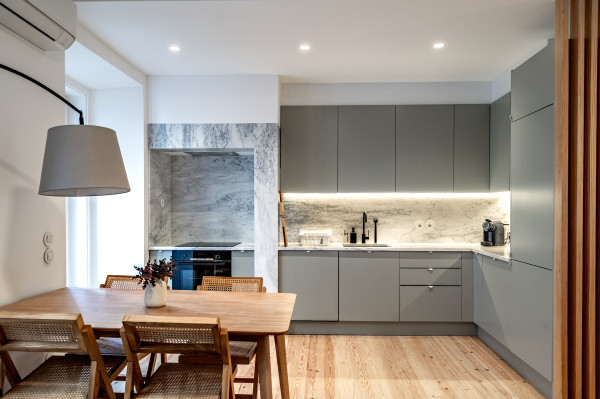In the rapidly evolving landscape, staying ahead of industry trends is essential to navigate the future of property management in 2024. Advancements in technology, shifts in society, and new industry practices contribute to a dynamic environment. These changes present both challenges and opportunities for property managers who must adapt swiftly to thrive.
From the integration of smart home technology and the emphasis on sustainability to the changing demographics of renters and the growing demand for flexible living spaces, understanding these trends will be crucial for property managers aiming to remain competitive and successful in the years to come. Here’s a look at some of the key trends and innovations shaping the future of property management in 2024.
The Rise of Smart Home Technology
In recent years, smart home technology has emerged as a game-changer in the property management industry. As we navigate the future of property management in 2024, the influence of technology continues to grow, transforming how properties are managed and enhancing the tenant experience.
What is Smart Home Technology?
Smart home technology refers to the use of internet-connected devices to manage and monitor various aspects of a home. These devices, often part of the Internet of Things (IoT), can include smart thermostats, lighting systems, security cameras, door locks, and appliances. They can be controlled remotely via smartphones or other devices, providing convenience, efficiency, and enhanced security.
Benefits for Property Managers and Tenants
For Property Managers:
- Operational Efficiency: Automation of routine tasks and remote monitoring reduces the workload;
- Cost Management: Energy savings and predictive maintenance lower operational costs;
- Tenant Retention: Modern amenities and improved living experiences increase tenant satisfaction and retention;
For Tenants:
- Convenience: Remote control of home systems and automated features simplify daily life;
- Comfort: Personalized settings for climate and lighting enhance living conditions;
- Sustainability: Energy-efficient technologies align with tenants’ growing preference for environmentally friendly living.
Energy Efficiency and Sustainability
Energy Efficiency Upgrades
Waste Reduction and Recycling Programs
Key Benefits:
- Cost Savings: Sustainable practices reduce utility bills and maintenance costs;
- Regulatory Compliance: Meeting environmental standards avoids penalties and enhances reputation;
- Tenant Attraction and Retention: Eco-friendly properties attract and retain tenants who prioritize sustainability.
Changing Industry and Tenant Expectations
The Rise of Gen Z and Millennial Renters
Generation Z and Millennials are quickly becoming the dominant forces in the rental market. These tech-savvy generations have unique preferences and priorities that differ from previous tenant groups. As a property manager, you’ll need to:
- Embrace digital communication channels like messaging apps and social media;
- Offer seamless online experiences for everything from applications to maintenance requests;
- Prioritize sustainability and eco-friendly amenities in your properties;
Remember, these younger renters often value experiences over possessions. Consider how you can create a sense of community and offer lifestyle-enhancing amenities to attract and retain these tenants.
The Growing Demand for Flexible Living Spaces
The pandemic shift to remote work has evolved into a more permanent hybrid model. As a property manager, you’ll need to adapt to this new reality. Many companies are downsizing their traditional office spaces and looking for more flexible options. This presents an opportunity for you to reimagine your commercial properties.
Consider converting some of your office spaces into desking areas or coworking hubs. These flexible arrangements can attract a diverse range of tenants, from freelancers to small businesses and even larger corporations looking for satellite offices.
Mid-Terms
One of the most significant trends reshaping the property management landscape is the rise of mid-term rentals. This emerging category bridges the gap between short-term vacation rentals and traditional long-term leases, offering a sweet spot for both property owners and tenants.
Several factors are fueling the popularity of mid-term rentals:
- The rise of remote work and digital nomadism;
- Increased demand for furnished, move-in ready accommodations;
- Growing preference for “try before you buy” experiences in new cities;
- Need for temporary housing during home renovations or relocations.
Embracing mid-term rentals can offer numerous advantages for property managers:
- Increased stability: Longer stays mean fewer turnovers and more predictable income streams;
- Higher yields: Mid-term rentals often command premium rates compared to traditional long-term leases;
- Expanded tenant pool: Tapping into new markets of professionals and temporary residents.
As we navigate the future of property management in 2024, it’s crucial to stay ahead of industry trends. Smart home technology, sustainability, and new tenant demographics are reshaping the industry. By embracing these innovations, property managers can enhance efficiency and elevate tenant experience, leading to higher satisfaction and retention rates.
The new demographic shift in the rental market also requires digital communication, personalized experiences, and eco-friendly amenities. Furthermore, the growing demand for flexible living spaces and mid-term rentals presents opportunities for property managers to diversify and tap into emerging markets.
By proactively adapting to these trends, property managers can thrive in this dynamic landscape, securing their competitive edge and positioning themselves for long-term success.
Follow Us
Lisbeyond is always here to help, and also to answer all your questions, so if you have any ideas on a topic you would like to read, feel free to contact us only a click away.




